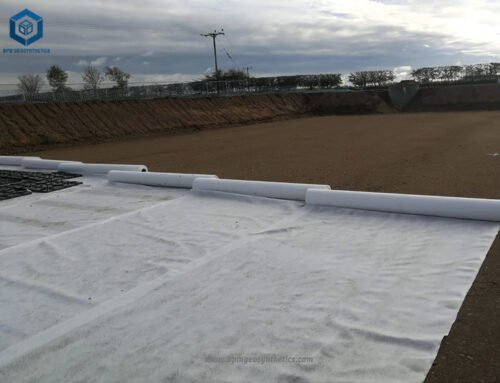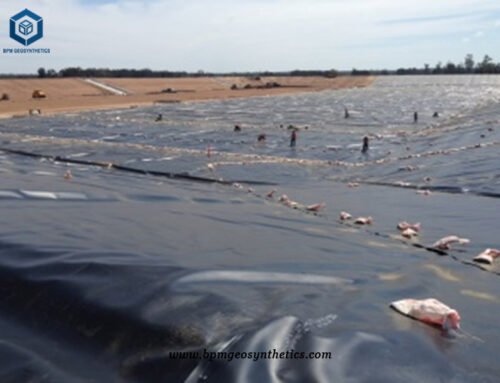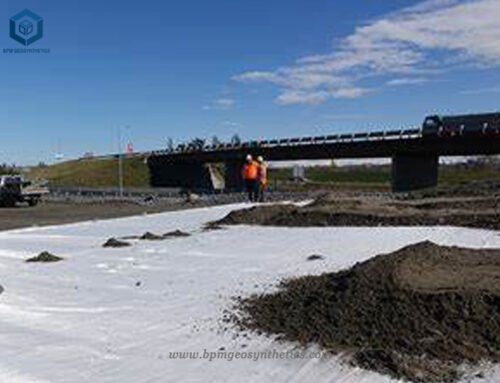High density polyethylene geomembrane, also known as HDPE geomembrane or HDPE anti-seepage membrane, is extensively utilized in various industries due to their excellent anti-aging and waterproof properties. These geomembranes are made from high-quality HDPE material, which provides them with exceptional durability and resistance to degradation over time.
1. What Is A High Density Polyethylene Geomembrane?
A high-density polyethylene (HDPE) geomembrane is a synthetic liner or barrier that is widely used in civil engineering and environmental applications to control fluid movement in the ground. It is typically composed of a milky white translucent to opaque white thermoplastic resin material known as polyethylene resin.
Polyethylene, the primary component of HDPE geomembranes, is a high molecular polymer that is non-toxic, odorless, and consists of white particles. It has a melting point ranging from approximately 110°C to 130°C and a relative density between 0.918 and 0.965. HDPE geomembranes exhibit excellent heat resistance, cold resistance, chemical stability, rigidity, toughness, and mechanical strength. They also possess resistance to environmental stress cracking and high tear strength.
The properties of HDPE geomembranes are influenced by their density. As density increases, so do mechanical properties, barrier properties, heat resistance, and tensile strength. HDPE geomembranes are capable of resisting corrosion from acids, alkalis, organic solvents, and other substances. They offer durability, chemical resistance, ultraviolet protection, and resistance to aging, allowing them to withstand various weather conditions and environmental factors.
BPM’s high-density polyethylene geomembrane is designed to provide long-lasting performance and protection. Its chemical resistance and UV protection ensure its durability in challenging environments. Additionally, its resistance to aging guards against the deterioration caused by weather conditions over time.
HDPE geomembranes serve as reliable barriers, providing effective fluid containment and protection in a range of applications, including waste containment, water management, and environmental protection.
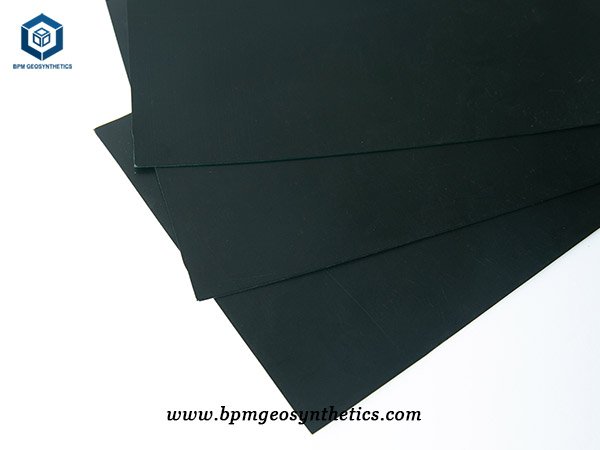
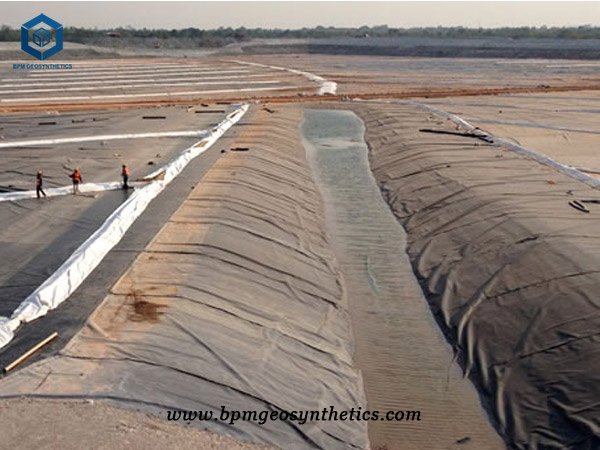
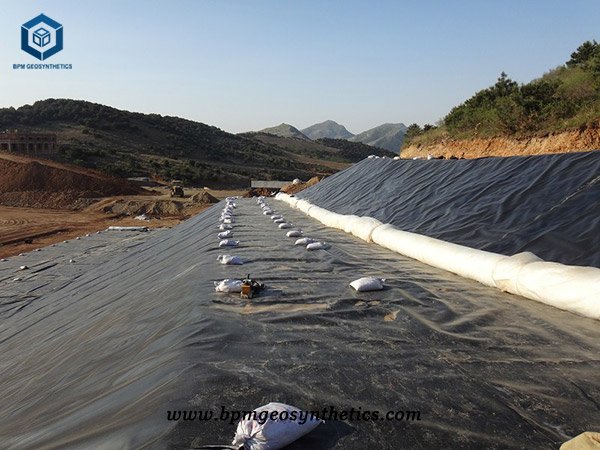
2. High Density Polyethylene Geomembrane for Landfill Project in Ghana
In landfill projects, the primary objective is to minimize the impact of solid waste on the environment, particularly the soil and underground water. For decades, high-density polyethylene (HDPE) geomembranes have been widely used in landfill projects. These geomembranes act as a containment system, effectively isolating the waste from the surrounding environment.
The main purpose of using HDPE geomembranes in landfills is to prevent pollution originating from the landfill, protecting the soil and groundwater. They serve as a barrier to prevent toxic waste and chemicals from entering aquifers, rivers, and lakes, thereby safeguarding the local water supply. The tear resistance, puncture resistance, and impact resistance of HDPE geomembranes ensure their effectiveness in preventing waste from reaching water sources. These geomembranes maintain their integrity even under stress, avoiding rips, tears, or deterioration.
The use of high-density polyethylene geomembranes in landfills is crucial for the health and safety of nearby residents, as well as the quality of the local water supply. By providing a reliable barrier, HDPE geomembranes help protect the environment and prevent contamination.
In February 2019, BPM received inquiries from customers in Ghana for their landfill project. Based on BPM’s ten years of experience and expertise, a recommendation was made for a 1.5mm HDPE geomembrane to cover the landfill and a 1.0mm HDPE geomembrane for the lining system. After conducting an on-site investigation and performing quality inspections, the customers confirmed the quality of BPM’s HDPE geomembrane. Subsequently, they placed an order for the required materials.
By choosing BPM’s high-density polyethylene geomembrane for their landfill project, the customers in Ghana are ensuring the effectiveness of their waste containment system and contributing to the protection of the environment and the well-being of the local community.
3. Specifications of High Density Polyethylene Geomembrane for Landfill Project in Ghana
- Total HDPE membrane quantity – 58,000 square meters
- Each roll size – 7m*100m
- HDPE Geomembrane Cover Thickness – 1.5mm
- HDPE Geomembrane Bottom Lining Thickness – 1.0mm
4. About BPM Geosynthetics
BPM have provided many types of effective and state of the art geomembrane, geotextile and geosynthetics products to over 36 countries. Our main innovative, high quality geosynthetics products include geomembrane, geotextiles, geocell, geosynthetic clay liners (GCLs), drainage boards, geogrids, etc. BPM brand brand high quality geosynthetic products had been certificated by the ISO9001, ISO14001,OHSAS18001 Soncap, SASO and BV, SGS and Intertek, etc.
BPM is also providing professional design and installation service. OEM and ODM are also available. If you have any questions or inquiries, please contatc us, we will reply as soon as possible.


